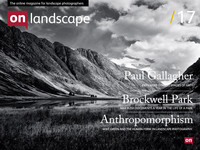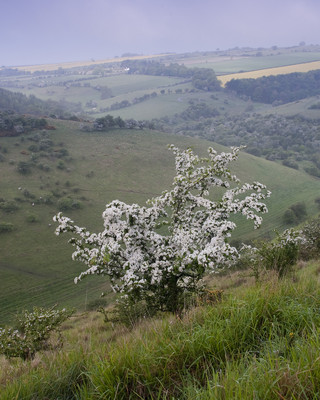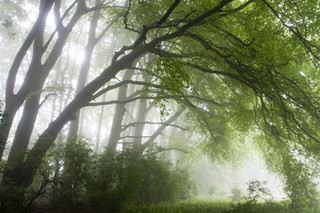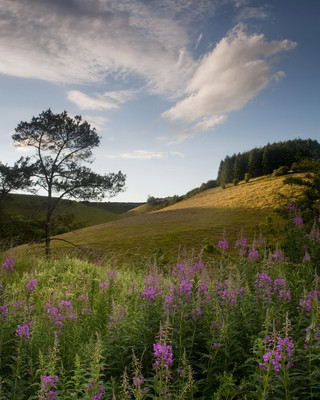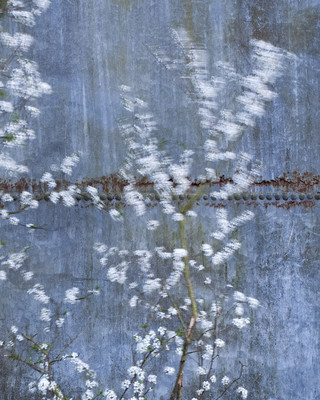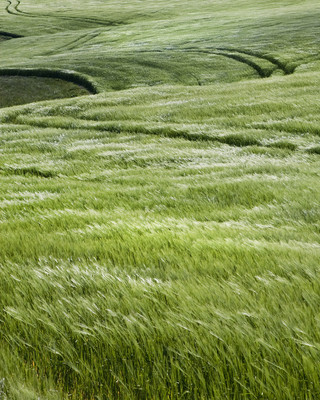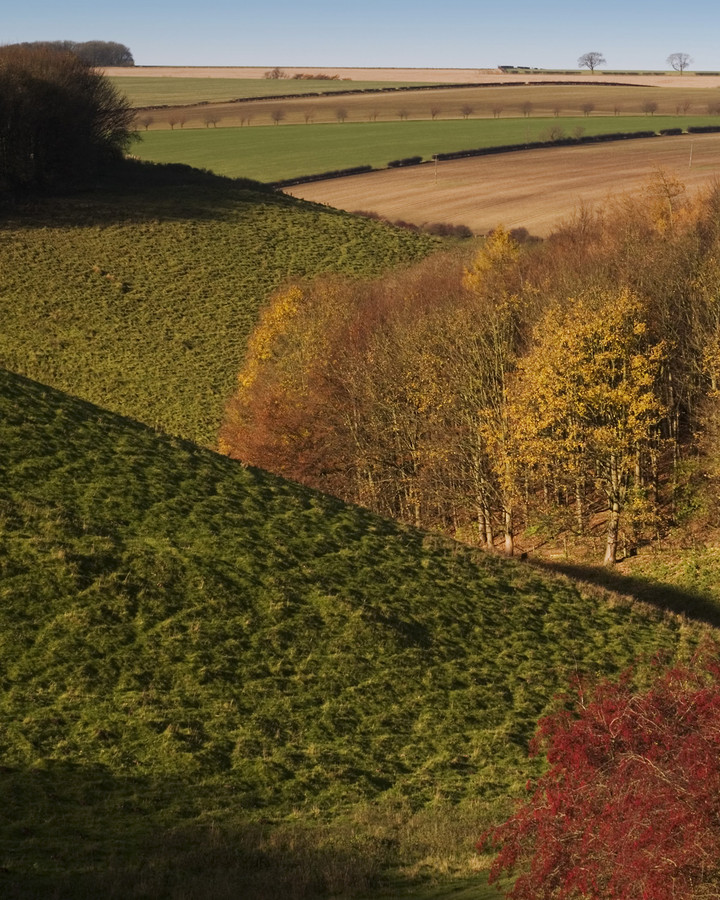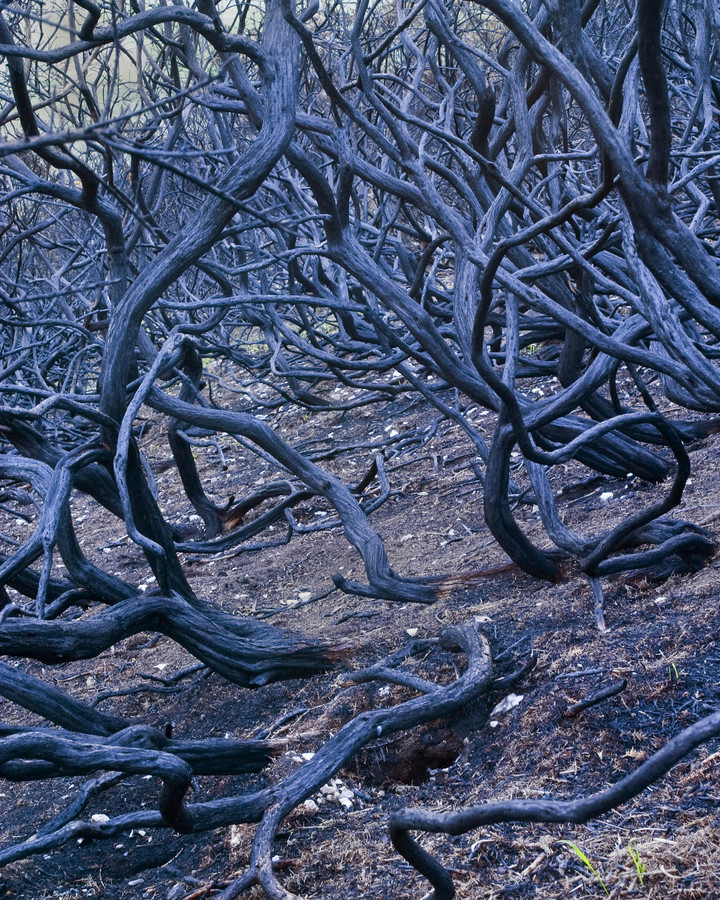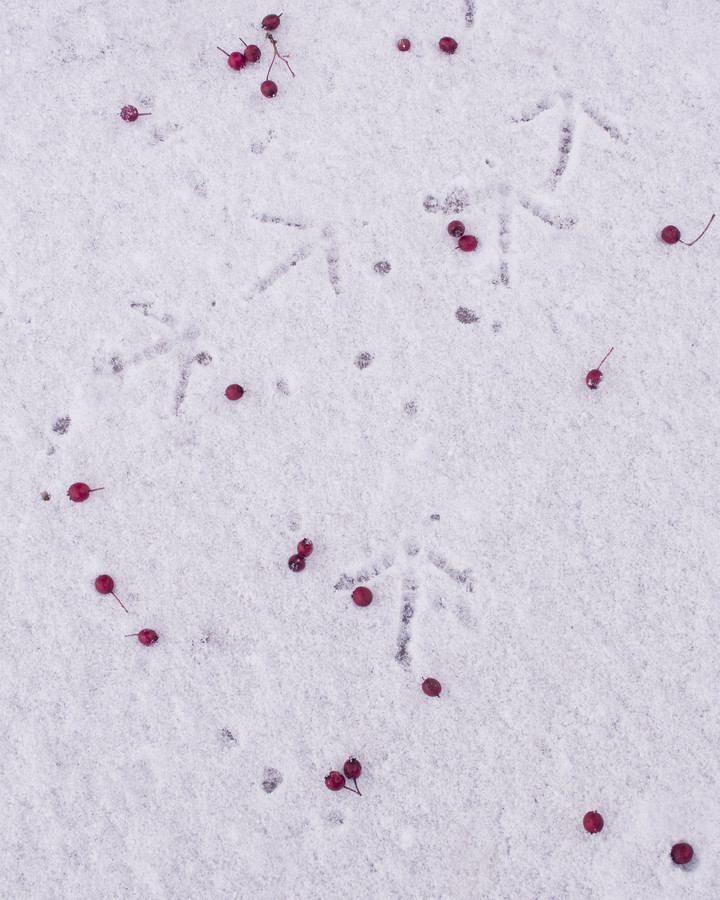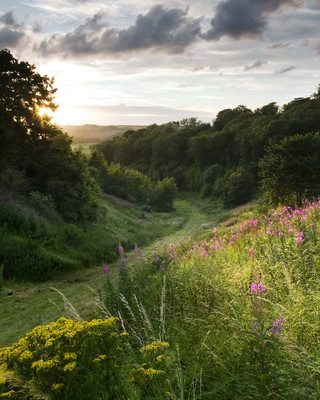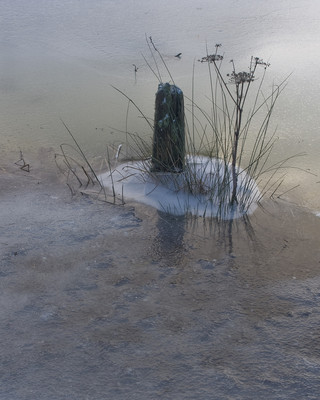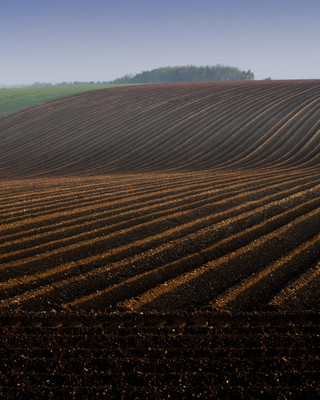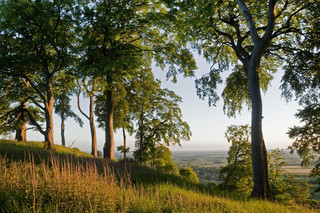Featured photographer

Tim Parkin
Amateur Photographer who plays with big cameras and film when in between digital photographs.

Paul Moon
Paul Moon is a landscape photographer from East Yorkshire and has spent 18 years documenting the Yorkshire Wolds - the UK's most northerly mainland chalk upland. It is known for its steep sided dry chalk dales which spread for miles throughout the area.
This week we're featuring a great photographer who has spent a lot of time championing a beautiful part of the country that gets a too little attention.
In most photographers lives there are 'epiphanic’ moments where things become clear, or new directions are formed. What were your two main moments and how did they change your photography?
I suppose my first epiphany would have to be the day my father returned from working abroad with a second-hand Zenit T SLR. It was clunky and awkward looking but I was smitten with it. I was only in my early teens but it really ignited something inside me. My parents encouraged my passion by buying me a Zenit TTL when I was 14. It was the black version so it was reasonably cool looking for a young teenager. Over the years I’ve attended night classes, taken an o-level in photography, learnt to process and print black and white photographs but never once did it occur to me that I could pursue a career in photography, especially landscape work. After years of using the camera to record my children growing up I started to become interested in patterns and textures in the landscape and a few local viewpoints. After being made redundant from a 15 year career in newspapers I bought a Canon 10D in 1994 and embraced the digital era. I had absolutely no idea that Joe Cornish, Charlie Waite, David Ward or Paul Wakefield even existed let alone Ansel Adams! Horrible to admit, I’m afraid!
The second epiphany was the realisation that I lived in a location that offered everything I ever needed in terms of wonderful subject matter. Like most budding landscape photographers I had an urge to travel to all the
honey-pot locations I’d seen in magazines, and did so when I took the family on holidays to places like Cornwall, The Lake District and Scotland but during local family walks I began to see the potential of the Yorkshire Wolds for landscape photography. I’ve lived here most of my life without being aware of how little it had been photographed seriously. There are chalk cliffs at Flamborough and Thornwick Bay that are popular locations for photographers but the inland region had been largely ignored. Mark Denton had photographed a few local views for his Yorkshire Moors and Wolds book but he hadn’t, in my opinion, captured the essence of the chalk landscapes I knew. I decided I had to start exploring and photographing the Wolds but it took me a couple of years to really get to grips with the style of photography needed to make successful images here. I tend to concentrate on the chalk valleys that were formed as melt-water produced huge rivers that cut deep into the frozen chalk at
the end of the ice-age. These valleys twist and snake through the chalk upland and are mostly used for grazing livestock. Most have stretches of open access land and are very popular with walkers. If anyone looks on Google satellite maps at the village of Thixendale, North Yorkshire, they will no doubt see the extent of some of the valleys and tributaries, There are no mountains, very few rock formations (other than at the coast), no waterfalls or ancient monuments and it doesn’t have the dramatic locations that would really attract photographers, such as Malham Cove in the Dales or The Hole of Horcum in the North Yorkshire Moors. However, there are stunning views and wonderful subject matter available throughout the year, it just needs time to get to know where.
Not being a full time photographer, how do you find time to get out and take pictures?
I’ve had a very supportive wife and children who have put up with my Wolds obsession over the past few years and hopefully their faith in my passion will not have been in vain. Being able to drive just a few miles to many of the locations I have discovered helps enormously as I can be at some of my favourite spots in 5-10 minutes.
I do venture out at least once a week because I feel that the area needs far more exposure (no pun intended!), and the only way I can achieve that is by being productive and it’s also improving my photographic ability.
It’s quite unusual to have all these wonderful locations to myself the vast majority of the time and I’ve discovered some real treasures which would have probably remained hidden, photographically speaking, without my determination and love for this region. There are places further a-field that I need to explore more but for the time being I have enough locally - within a 10 mile radius - to keep me occupied.
Could you tell us a little about the cameras and lenses you typically take on a trip and how they affect your photography.
My equipment is very basic compared to most serious landscape photographers. I only have one camera body, a Canon 30D and three lenses that have seen better days, an 18-50mm, a 28-105mm and a 75-300mm. Wide angle photography on the Wolds is difficult so I tend to use the mid-range zoom more often. I occasionally use a 2-stop grad (when I get round to replacing the scratched one!) and a polariser (rarely). My Manfroto tripod is due for renewal but I’ll get a little more use out of it yet. I’ve enjoyed using digital because it gives me flexibility to experiment and not worry too much about the cost of failure. I’d love to use a 5x4 view camera sometime in the future but I’m unable to justify the expense at present and I like travelling light!
Your photographs exhibit a wonderful stream of
experimentation and each photograph is well considered in terms of composition and light. Do you compose instinctively or do you spend a lot of time on each photograph?
Thanks for the compliment Tim. I guess I’d have to call it instinctual, as I’ve never had any training or attended workshops. Some people may call my compositions simplistic or naive but that’s how I like to shoot. I’m trained in graphic design so I’m instinctively drawn to simple structural forms in the landscape, be they twisting S-shapes or zig-zags which occur often in my Wolds work. I’ve had the pleasant company of expert large format photographer Jon Brock on many outings around the Wolds, and to see him patiently working the subject matter has also had an affect on my photography. I return to many locations regularly but I also try and set aside periods when I will just scout new locations looking for subjects that will be worth returning to at a certain time of day or time of the year. These may well be beds of wild flowers or certain species of trees (alive or dead!). The weather conditions such as snow, ice, mist or low sun also play a big part in my choice of location and composition. Eventually all the conditions and my experience pays off, but on the odd occasion I just happen to find the perfect image slap-bang in front of me.
Tell me what your favourite two or three photographs are and a little bit about them.
Autumn View – this is quite a pivotal image for me and my vision of the Wolds. It was taken in the middle of a bright sunny day in November in a small valley I’d only visited once before. Not the best way to approach a location admittedly and I tried hard to produce an image using my wide angle zoom, which seemed to be what all the magazines had been telling me to use. I gave up and reached into my rucksack for my telephoto lens as I’d been interested in this section of the view when composing the wide angle shot. Suddenly I realised that what I was seeing had all the makings of a strong graphic image using the receding curves and colours in blocks together with the hard shadows. To me it is archetypal Wolds landscape and I’d been trying hard to create this vision until that moment. I’m not sure it will go down well with many landscape photographers due to its hard lighting but I still enjoy looking at it.
Burnt Gorse – I had come across this patch of recently burnt gorse on the side of a valley at dusk. The landowners often destroy gorse and hawthorn scrub to encourage the grasses for grazing livestock and to conserve the native wild flowers. I quickly made a few images with the smell of smouldering wood filling my lungs but it was only after cropping my original effort to my preferred 5x4 portrait ratio recently that I realised how fortunate I’d been with my instinctive (jammy!) composition.
Footprints and Berries – not all my landscape shots have to be serious as this goes to prove. I nearly walked past this snow covered puddle with the path of hawthorn berries and the trail of pheasant tracks. It has a wonderful narrative quality running through it, holes where berries have been plucked up by the pheasant, the arrow footprints pointing back along its chosen path and the sudden disappearance of the footprints. It also indicates two of the Wolds most widespread occupants, the hawthorn and the pheasant in an abstract study. Perhaps I should just stick to vistas!
What sort of post processing do you undertake on your pictures? Give me an idea of your workflow..
I shoot raw, using self-timer and mirror lock-up, and process using the Photoshop Raw converter. I usually add contrast using the slider, tweak the white balance to a favourable setting, recover blown highlights, which I try hard to avoid in-camera and then increase the blacks setting until they become clipped on the histogram. I avoid saturation and vibrance as increasing contrast usually boosts colour intensity anyway. I often process two versions of the same shot, one for sky and one for foreground and then blend them after pasting one on top of the other and using a layer mask. Occasionally I shoot two images out in the field if I feel the contrast range is too excessive, one for shadows and one for highlights (if I can’t use a grad for some reason), then blend each together after processing. I’m a bit of a fan of deep shadows and often underexpose my raw files to increase the blacks but only occasionally when the subject suits the treatment. I suppose it’s a nod to the lack of dynamic range of Velvia but as you’ve discovered recently it does hold shadows better than previously presumed. Perhaps I should strive to show some detail in shadows but still keep them deep. I then use the dodge and burn tools (sparingly) until I’m happy with the results. I then use Lab sharpening with discretion. One other thing I do is crop all my uprights to 5x4 ratio. I don’t use this ratio for my landscape shots however, I just trim to a width I feel works best. I don’t crop to panoramic formats but I do take a few panoramas using multiple shots for stitching as it gives better results.
Do you print much of your work? If so how have you approached it and if not, why not?
I do sell prints of my work occasionally and use either a Roland Versacamm for canvases or an Epson Stylus Pro 4400 that we use at work for press proofs. I work in pre-press so know how to turn out fairly decent ink-jet prints. I’ve had some of my photographs litho printed for my own range of greetings cards and that has been an experience. I had no profiles for the press for the CMYK conversions, I just relied on instinct and knowledge of our workflow and having a monitor correctly calibrated helps enormously. I’m more than happy with the results although I’d prefer to spend more time experimenting. I had two books published a couple of years ago by Halsgrove on the city of York and I had no proofs to check the results of my CMYK conversions. In hindsight I could have lightened them a little more but they were reasonably accurate to my monitor. I am slowly getting the hang of CMYK conversion but having said that, and in spite of my occupation, I still have a great deal to learn on the art of printing.
Tell me about the photographers that inspire you most.
I’m inspired by many photographers but the four who have fuelled my passion have to be Joe, David Ward, Paul Wakefield and Charlie Waite. Each has their own unique direction in recording the landscape but all show a real love of their subject matter and I hope I show the passion I
have for the Wolds in the images I make. I recently invited Joe for an afternoon trip out on the Wolds and he duly obliged. It was a real pleasure watching him tackle some of the subject matter I showed him and I’m sure he’ll return soon! Other photographers who inspire me include Christopher Burkett, Charles Cramer, Peter Dombrovskis, Elliot Porter, Nigel Haliwell, Dav Thomas, Dave Tolcher, Paul Mitchell, Kyriakos Kalorkoti to name but a few and my good friend Jon Brock, and of course your good self Tim! As you may have noticed they mostly use film and/or large format view cameras. I try hard with my style to emulate the compositional approaches of these photographers but still have a great deal to learn from these experts.
What sorts of things do you think might challenge you in the future or do you have any photographs or styles that you want to investigate? Where do you see your photography going in terms of subject and style?
I’m hoping that the next challenge for me will be to see my work published in a book. I’m not in a position to self-publish although I could produce a Blurb book (other on-line self publishing companies are available!). I’d rather not have to make a guide book but just let my work tell the story of the Wolds landscape and it would have to be a quality product in order for me to be happy. Probably far too much to ask, but still worth pursuing. I’d also love to be able to have eminent photographers running workshops with myself as a guide in the future (for a small fee! ).
I’m not really a creative photographer but I really enjoy the work of photographers like Doug Chinnery, Chris Friel and Rob Hudson. It’s just not something I have a passion for at present. I’m more of a documentary photographer (as Joe likes to call it), and I take great pleasure in the creativity of nature and occasionally man-made objects. Perhaps I’ll have another epiphany and discover something that does take me in a new direction but until then I’ll just continue producing the work I feel comfortable with at the moment. Over the years I have often attempted to shoot vistas in dull or wet conditions with soft light and I’ve been reasonably happy with the results so I’ll continue to work on that side of my landscape work.
One last thing that I’d love to see happen in my lifetime is for the Wolds to be given a national designation for its landscape quality. A national park would probably be too much to ask, but an AONB designation would be ideal to help protect the landscape from large scale development. There are already plans afoot to install ten 126 metre tall wind turbines on the Wolds and in my opinion they will seriously disrupt some stunning views. I’d love anyone who feels passionate about this subject to visit www.heslertonwindfarm.com and sign the petition for AONB designation. Hope I’m not rubbing anyone up the wrong way with this request. I’d be even more pleased if my landscape photography could in some way contribute to an AONB designation happening.
Who do you think we should feature as our next photographer?
I’d love you to feature Paul Wakefield as his four books published by Aurum Press in the eighties have been a benchmark for many landscape photographers including myself. Oh, and that nice Jon Brock chap!!
By the way, did I mention the Wolds…..!
Thank you Paul for a another great interview and for your passion for the Wolds - please take up his call to support it too.. You can see more of Paul's images either at his website or by visiting his flickr stream.
- 6
- 5
- 4
- 7
- 3
- 9
- 2
- 1
- 8

